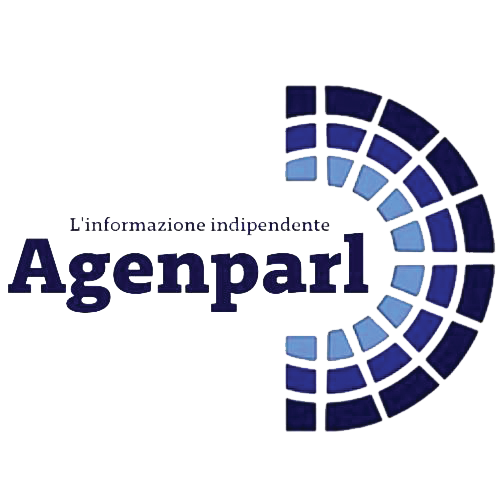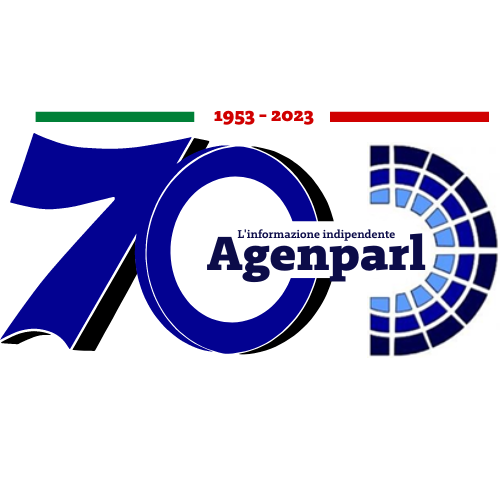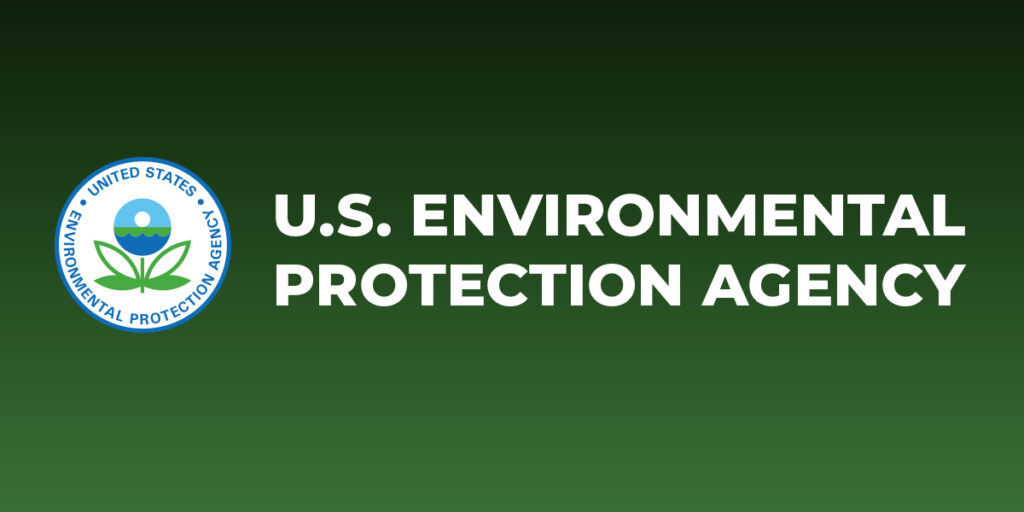 (AGENPARL) - Roma, 14 Gennaio 2025
(AGENPARL) - Roma, 14 Gennaio 2025(AGENPARL) – mar 14 gennaio 2025 Issued: Jan 14, 2025 (10:00am EST)
If you wish to unsubscribe please do so
here: http://url6130.epa.mediaroom.com/ls/click?upn=u001.iqz6hAvLdUl-2FaSixKUG3iyFJBsxNAroAZOQ1BID8fKIiLAUfJX2sQlhu1tzKAOIu-2BU84uzAzSpWvmWyHnsNJDRYXWx5dlMz75Zp9ch-2BQlG6mQHPYjReZhS13hvd5qOopKFja_-2B0Ok6Af7hyz7Kqg6CR74pYblAA1WjrUjKSJUAiv3NOub0DC4O7JPWGxIlQ7kBB-2FSyKpvQ4ilunRdafs7nHMAj9COHwBKTqjtHIKSi3e7gr8ztXbog-2B9s3J5tKkW0DAFVWCcPXx7ApvuZGSFQ6ocrlTgDQ9HWl7QNVxa8RUDyV5Wn2pZ6MfBP7kMWQua7IikVboYX3wzd-2B-2FThaNsZqgNyq8V5M1WRr3Pagd63xPOEUQ-2BAdq-2FMo4b-2B9MNqW4-2FGt4ZY
EPA Releases Draft Risk Assessment to Advance Scientific Understanding of PFOA
and PFOS in Biosolids
WASHINGTON – Today, Jan. 14, the U.S. Environmental Protection Agency
released a draft risk assessment, or scientific evaluation of the potential
human health risks associated with the presence of toxic per- and
polyfluoroalkyl substances (PFAS) chemicals in biosolids, also known as sewage
sludge.
The findings for the draft risk assessment show that there may be human health
risks associated with exposure to the “forever chemicals” PFOA or PFOS
with all three methods of using or disposing of sewage sludge – land
application of biosolids, surface disposal in landfills, or incineration. Once
finalized, the assessment will help EPA and its partners understand the public
health impact of forever chemicals in biosolids and inform any potential
future actions to help reduce the risk of exposure.
“EPA under President Biden’s leadership has taken unprecedented actions to
advance research and science on PFAS and to protect people from these
dangerous forever chemicals,” said EPA Acting Administrator Jane Nishida.
“This draft assessment provides important information to help inform future
actions by federal and state agencies as well as steps that wastewater
systems, farmers and other stakeholders can take to protect people from PFAS
exposure, while ensuring American industry keeps feeding and fueling our
nation.”
Defining Biosolids
Wastewater produced by households and businesses, and sometimes industrial
dischargers, is conveyed to a wastewater treatment plant, and ultimately
treated. These treatment processes also produce a semi-solid, nutrient-rich
product known as “sewage sludge” or “biosolids.” EPA typically uses
the term “biosolids” to mean sewage sludge that has been treated to meet
regulatory standards and is thereby suitable to be land applied as a soil
conditioner or fertilizer. In turn, biosolids can be beneficially reused as
land applied fertilizer on agricultural fields or on nonagricultural lands to
promote plant health and productivity.
Draft Risk Assessment
This draft risk assessment focuses on a specific and narrow population of
people that EPA considers most likely to be exposed to PFOA or PFOS from the
land application of biosolids or through consumption of products from land
where biosolids were used as fertilizer. The draft risk assessment
scientifically models hypothetical human health risks for people living on or
near sites impacted by PFOA or PFOS or for people relying primarily on those
sites’ products (e.g., food crops, animal products or drinking water). The
preliminary findings of the draft risk assessment indicate that there can be
human health risks exceeding EPA’s acceptable thresholds, sometimes by
several orders of magnitude, for some scenarios where the farmer applied
biosolids containing 1 part per billion (ppb) of PFOA or PFOS (which is near
the current detection limit for these PFAS in biosolids). These modeled
scenarios include farms with one application of biosolids at a rate of 10
dry-metric-tons per hectare and 40 consecutive years of biosolids land
application at this same rate. The modeling in this assessment also finds
human health risks exceeding the EPA’s acceptable thresholds in some
scenarios where biosolids containing 1 ppb of PFOA or PFOS are placed in an
unlined or clay-lined surface disposal unit. Once finalized, EPA will use the
risk assessment to help inform future risk management actions for PFOA and
PFOS in sewage sludge. For the incineration scenario, risk is not quantified
due to significant data gaps.
EPA’s analysis does not suggest that the general food supply is impacted by
the use of biosolids that contain PFOA or PFOS. The U.S. Department of
Agriculture and Food and Drug Administration are monitoring for PFAS in the
food supply broadly and have taken protective actions to address impacted
products from domestic and imported sources. Based on the best available data,
biosolids account for less than one percent of the fertilized acreage of
productive agricultural land in the United States per year. EPA recognizes
that certain “hot spots” and specific farming operations may have higher
levels of PFOA or PFOS if contaminated sludge was applied, and that further
collaboration with impacted operations and other federal agencies will be
important to fully understand risks and support impacted farmers.
EPA’s analysis finds that the risks of exposure to PFOA and PFOS through
biosolids increases proportionally with the amount of those chemicals in the
biosolids. This means that if you lower the concentration of PFOA or PFOS in
biosolids or the amount of biosolids applied to agricultural land, you lower
the risk. The actual risks from exposure to PFOA or PFOS will vary at farms
that land-apply biosolids or at biosolids disposal sites based on the amount
of PFOA or PFOS applied, as well as geography, climate, soil conditions, the
types of crops grown and their nutrient needs and other factors. Where smaller
amounts of PFAS-contaminated biosolids have been spread, or fewer applications
have been made over time, or lower concentrations of PFOA and PFOS were in the
biosolids, the risk will be reduced.
The findings of the draft risk assessment underscore the importance of
proactive federal and state policies to control and remove PFAS at their
source. Under EPA’s PFAS Strategic Roadmap, the agency has provided tools to
restrict PFAS from entering the environment and to hold polluters accountable,
including increasing reviews of new PFAS before they enter commerce and
encouraging states to use their Clean Water Act permitting authorities and
industrial pretreatment programs to require industrial dischargers of PFAS to
remove them before sending their effluent to the environment or to wastewater
treatment plants. Moving forward, EPA is working to set technology-based
limits on discharges from several industrial categories—including PFAS
manufacturers, electro- and chrome-platers and landfills—under the
agency’s Effluent Limitations Guidelines program.
Forever Chemicals in Wastewater
PFOA and PFOS get into sewage sludge via the wastewater that enters municipal
wastewater treatment plants (WWTPs), which do not intentionally use or add
these substances in their treatment processes. WWTPs may receive PFOA or PFOS
from manufacturers and other facilities that currently use, or historically
have used, these PFAS and release contaminated wastewater to WWTPs. Households
and businesses can also be sources, as PFAS from consumer products (e.g.,
cookware, clothing or cosmetics that may contain certain PFAS) are washed down
drains and make their way to a WWTP.
EPA and State Actions on Forever Chemicals
Under EPA’s PFAS Strategic Roadmap, the agency has made historic progress in
advancing the science and establishing standards to protect communities from
PFAS pollution. These actions include finalizing the nation’s first drinking
water standards for PFAS, holding polluters accountable to clean up PFAS
across the country and declaring PFOA and PFOS hazardous substances under the
Superfund law. By releasing this draft risk assessment, EPA is providing
stakeholders with a rigorous, data and science-driven report that, once
finalized it may help the agency determine whether regulating PFOA and PFOS in
sewage sludge under the Clean Water Act is appropriate.
Several states have begun monitoring for PFAS in sewage sludge and published
reports and data that are publicly available. EPA’s draft risk assessment
document provides an overview of PFOA and PFOS occurrence data from
peer-reviewed literature and state reports in Section 2.4 and Appendix A. Some
states continue to collect additional sewage sludge PFAS monitoring data.
EPA’s draft risk assessment document, Draft Sewage Sludge Risk Assessment
for Perfluorooctanoic Acid (PFOA) and Perfluorooctane Sulfonic Acid (PFOS),
will be available for public comment for 60 days following announcement in the
Federal Register. Learn more about the draft risk assessment and how to
comment on it. Also read about other recent EPA actions to help address PFAS
in Biosolids.
EPA will hold a public webinar on Wednesday, January 15, 2025 at 12:00pm ET.
Register for the webinar using the webinar registration link.
Background
EPA risk assessments follow a scientific process to characterize the nature
and magnitude of health risks to children, adults, and the environment from
pollutants based on modeled exposure scenarios. An environmental risk
assessment considers three primary factors: 1) presence (i.e., how much of a
pollutant is present in the environment), 2) exposure (i.e., how much contact
a human or wildlife has with the pollutant), and 3) the toxicity of the
pollutant (i.e., the health effects the pollutant causes in humans or
wildlife) (see EPA’s Risk Assessment Basics).
To unsubscribe or change your settings click here:
http://url6130.epa.mediaroom.com/ls/click?upn=u001.iqz6hAvLdUl-2FaSixKUG3iyFJBsxNAroAZOQ1BID8fKKhIILjisBDEktm3-2BIos9X6mM1jObWB1-2BCwIYsTnuu9q0GmWU6lizBruPDDAlB57ax20xEArTM09OO5NPoCxCQjuHUU7KAmvrkPo-2BB0MLKVAA-3D-3DPiJC_-2B0Ok6Af7hyz7Kqg6CR74pYblAA1WjrUjKSJUAiv3NOub0DC4O7JPWGxIlQ7kBB-2FSyKpvQ4ilunRdafs7nHMAj9COHwBKTqjtHIKSi3e7gr8lHTUMYThAhoPeM8YsLs9o86yvA5V5J1BK-2Bzs2eLJIqI-2BLMXu3kIpUL5kHjZQLWhEqGeMU0liZPbKCpErOiUfMandLOhPy8qsnGGwwk2Qi-2BMBv0HI3xPsMfP68Z9AueG0VnGwJsm-2F4NmNNOO05FJAg

